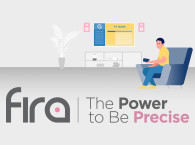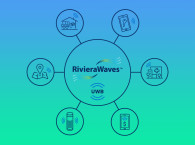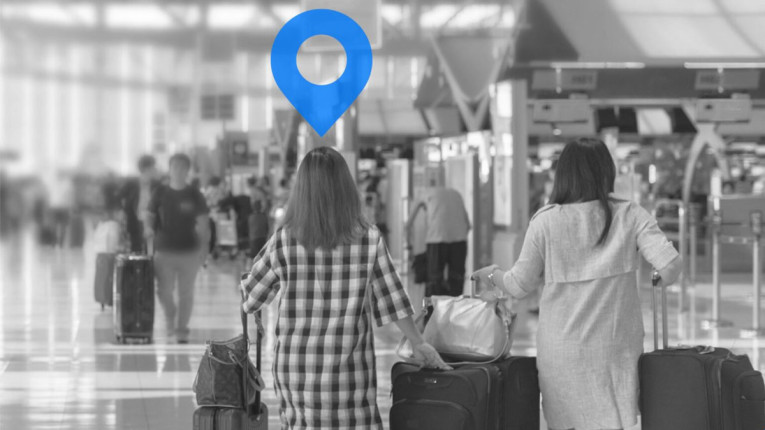
Apple AirTags have created mainstream consumer awareness for the possibilities of locating their personal devices - and even pets - at any time. Using a combination of ultra-wideband (UWB), near-field communication (NFC), and Bluetooth, Apple created its powerful Find My ecosystem that caught all other technology companies by surprise. More importantly, Apple's AirTag implementation served to show how many comparable efforts for location in industrial and transportation sectors have been lagging for decades. Now that Google, Samsung and other technology players in China are rushing to copy Apple Find My services, the Bluetooth SIG has introduced a much required specification update that will enable Bluetooth technology to compensate for the lack of UWB support in most hardware devices.
Bluetooth Channel Sounding allows for estimating the distance between two Bluetooth LE devices with great accuracy, on the order of 10-30 centimeters - a significant improvement over existing Bluetooth distance measurement techniques. And although Bluetooth Channel Sounding and Ultra-Wideband (UWB) are both used for accurate distance measurement and positioning, they perfectly complement each other. Bluetooth technology can be used for initial device discovery and connection setup, with UWB taking over for higher precision tasks when needed. Because UWB offers quicker distance and position determination, resulting in more responsive positioning applications, hybrid implementations, combining multiple ranging methods, will continue to support the largest ecosystems in mainstream consumer applications.
But because UWB requires a separate chipset, and Bluetooth Channel Sounding can be integrated into existing Bluetooth devices, leveraging the vast Bluetooth ecosystem (over 5 billion annual device shipments), it becomes a valuable addition to provide a more accessible and widely adoptable solution for improved ranging accuracy. Bluetooth Channel Sounding also improves design options for very low-power or even self-powered devices, such as required in industrial environments.
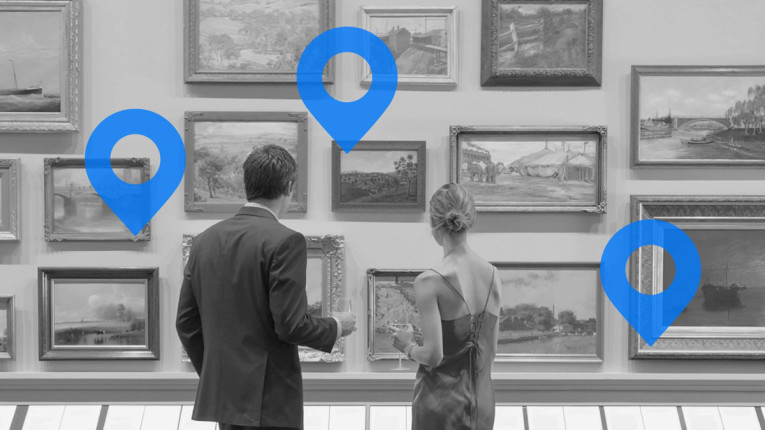
"Bluetooth technology has become an ingredient of everyday life," says Neville Meijers, CEO, Bluetooth Special Interest Group. "When connected devices are distance-aware, a range of new possibilities emerge. Adding true distance awareness to Bluetooth technology exemplifies the ongoing commitment of the Bluetooth SIG community to continuously enhance our connection with our devices, one another, and the world around us."
The new Bluetooth Channel Sounding feature has the potential to introduce Bluetooth "Find My" type solutions using Bluetooth tags that can be attached to personal items such as keys, wallets, backpacks, or luggage. And using Bluetooth Channel Sounding, developers can soon add true distance awareness to an existing "Find My" device, improving the accuracy and user experience of these solutions and making it significantly easier and quicker for users to locate lost items. Developers can also use Bluetooth Channel Sounding to enhance the security and user experience of digital key solutions, ensuring a lock only opens when the authorized device is within a certain distance.
"We look forward to adding this new feature to our upcoming Bluetooth Digital Key specification," says Feng, Yunsheng, Chief Secretary of the Intelligent Car Connectivity Open Alliance (ICCOA). "The adoption of Bluetooth Channel Sounding will help the ICCOA continue to deliver greater convenience, performance, and security to drivers and passengers worldwide."
"The ICCE is committed to developing industry standards and fostering cross-industry collaboration to enable seamless intelligent in-car services," says Chief Secretary Mr. Ren Feng of the Intelligent Car Connectivity Industry Ecosystem Alliance (ICCE). "We are therefore studying the addition of Bluetooth Channel Sounding technology as one of the ranging methods in the ICCE car key standard and we look forward to integrating it."
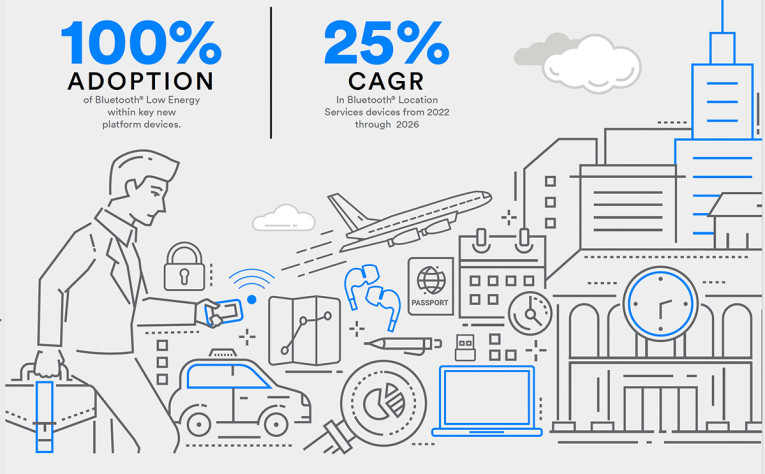
Beyond "Find My" and digital key solutions, Bluetooth Channel Sounding also has the potential to bring benefits to additional applications, in consumer, enterprise, and industrial settings. "Imagine Bluetooth mice, keyboards, and game controllers that can automatically switch between active and inactive states based on their distance from a laptop. In industrial settings, distance aware Bluetooth Human-Machine Interface (HMI) solutions can increase personnel safety by only allowing usage from a safe distance. Meanwhile, Bluetooth device networks, such as those used for networked lighting control, can more easily self-configure to enhance system performance using this innovative technology. With well over 5 billion Bluetooth enabled devices forecasted to ship in 2024 alone, the opportunities are significant," adds Andrew Zignani, Senior Research Director, ABI Research.
Bluetooth Channel Sounding leverages phase-based ranging (PBR) to enable highly accurate distance measurement between Bluetooth connected devices and achieve centimeter-level accuracy over considerable distances, meeting the needs of the vast majority of applications and allowing even the simplest connected devices to take advantage of true distance awareness.
Although UWB provides centimeter-level precision, surpassing the accuracy of Bluetooth Channel Sounding, it is a higher cost, higher power, widely available technology. Bluetooth Channel Sounding also deploys robust, multi-layer security that includes a secondary ranging method, round-trip time (RTT) based distance bounding, to add an extra layer of protection to counter sophisticated man-in-the-middle (MITM) relay attacks.
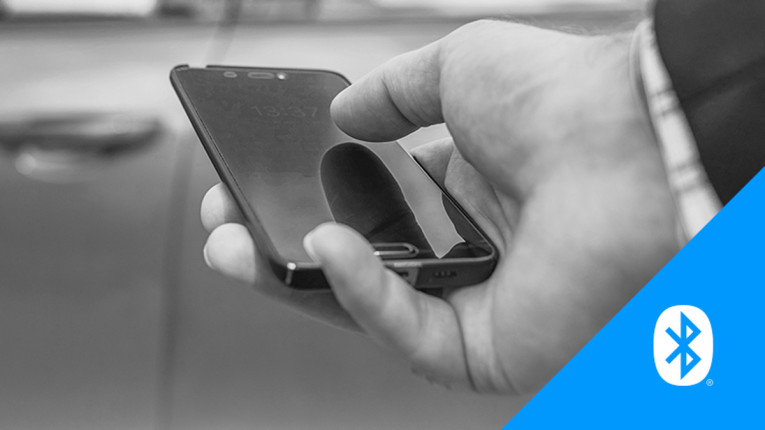
"Bluetooth Channel Sounding is poised to bring true distance awareness to a vast array of Bluetooth devices, unlocking new possibilities for distance-aware applications across various industries," says Joonsuk Kim, executive vice president of the System LSI Connectivity Team at Samsung Electronics. "With Bluetooth Channel Sounding, we're able to elevate the performance of "Find My" applications by delivering centimeter-level accuracy, helping our customers find important items with greater ease. Additionally, Bluetooth Channel Sounding enhances the security of digital key solutions, providing an extra layer of protection for keyless entry users. These are just a few examples of the transformative potential of Bluetooth Channel Sounding, with many more possibilities waiting to be realized."
Bluetooth Channel Sounding is just one of the new features included in the recently adopted Bluetooth Core Specification Version 6.0. A complete feature overview of the Bluetooth Core Specification version 6.0, which also includes enhancements to the Isochronous Adaptation Layer (ISOAL) crucial for digital audio applications, is available here.
www.bluetooth.com




